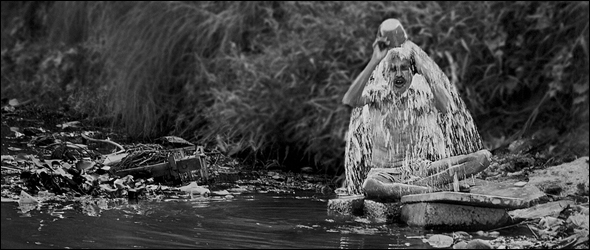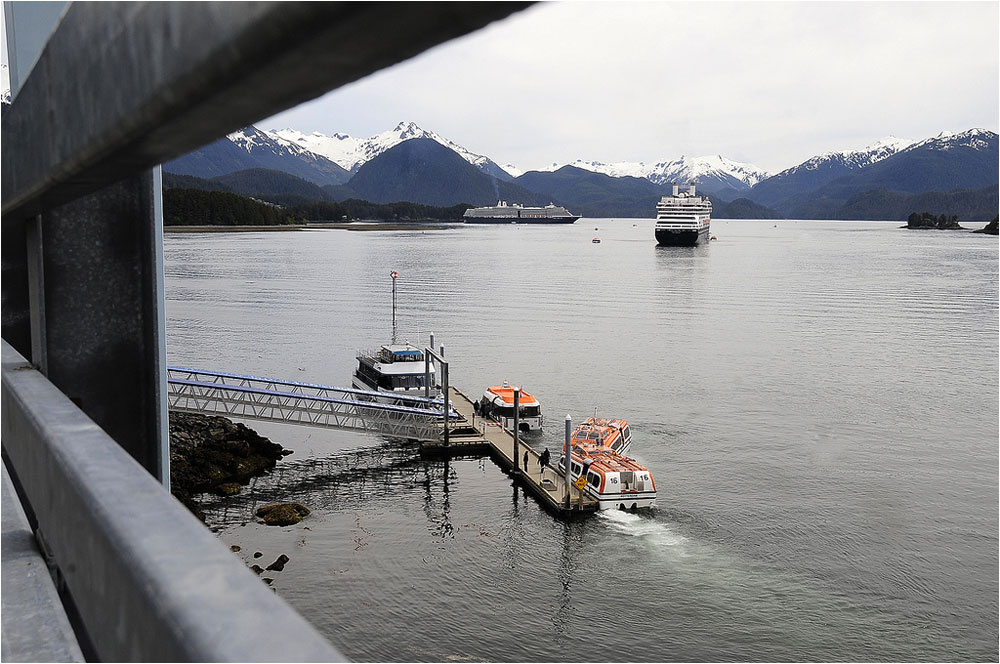Overdraft and Saltwater Intrusion Strain the Floridan Aquifer
Excessive withdrawals are forcing communities from South Carolina to Florida to look elsewhere for water.
The Hilton Head Public Service District, which provides water and sewer service to a South Carolina island resort community, announced last week that it was shutting down one of its wells because saltwater had soured the supply. It became the sixth of the district’s dozen wells to be sealed in the last decade due to saltwater displacing fresh groundwater, signaling a potentially dangerous new trend for the water supply of millions of people in the Southeast.
“This is just the start of it,” the district’s general manager Richard Cyr told Circle of Blue. Cyr expects another two wells to be spoiled in the next year and all the wells to close by 2020, as salt water plumes move inland. “We are the canary in the coal mine for the coastal area. This is a regional issue. Anyone using the Floridan Aquifer is subject to these threats.”
To replace the lost supplies, Hilton Head PSD built a pipeline to the mainland in 1999 to bring water from the Beaufort-Jasper Water and Sewer Authority and last year opened a desalination plant to treat brackish water.
The scope of the threat from saltwater intrusion is still being studied, according to Bruce Campbell, a groundwater specialist with the U.S. Geological Survey. But that water from the aquifer is being withdrawn faster than it is replenished is undeniable.
“Hilton Head was a groundwater discharge point until 30 years ago,” Campbell said. “Now, it’s just the opposite. Seawater is moving laterally inland through the aquifer.”
For the millions who rely on the highly-productive Floridan aquifer, a new water future is now being drawn up by water districts and state natural resource departments, as they struggle to rein in use of a resource that was, until recently, largely unmanaged. It is a future of pumping restrictions, desalination plants, recycled water and more expensive surface supply options.
The Source
The Floridan Aquifer underlies all of Florida, as well as parts of Georgia, South Carolina and Alabama. A semi-permeable layer divides the porous limestone aquifer into an upper and lower section, each of which contains multiple water-bearing zones. Most of the more than 3 billion gallons withdrawn daily are taken from the upper section. That water is used by thousands of small towns and large cities such as Orlando, Jacksonville, St. Petersburg and Tallahassee in Florida, and Brunswick and Savannah in Georgia.
Coastal areas, like Hilton Head, S.C., are concerned about saltwater intrusion. Georgia, for example, established a groundwater permitting plan in 2006 for counties on its coastal plain. According to the document, red zone counties have to reduce their pumping by 5 million gallons per day compared to 2004 levels. Yellow zone counties can increase pumping only by 5 million gallons per day.
Those limits, however, cannot stop the sea’s inland flow. Last May, Georgia’s Environmental Protection Division released a study according to which groundwater withdrawals would need to be cut by 90 percent in the Savannah-Hilton Head area to stop further saltwater penetration.
Economics also plays a role, since the water taken from the Floridan is much cheaper than other supplies. Thunderbolt, a town near Savannah, pumps groundwater at 49 cents per 1,000 gallons. In comparison, using water from the city’s surface diversion would cost $1.61 per 1,000 gallons, according to the Savannah Morning News. Tampa Bay Water, a regional wholesaler in Florida, blends water from three sources: groundwater, at $1 per 1,000 gallons; surface water, at $2 per 1,000 gallons; and desalinated water, at $3.50 per 1,000 gallons.
Cheap groundwater, if not managed, creates a tragedy of the commons situation in which municipalities use low-cost water over surface supplies to the detriment of their neighbors. Excessive pumping from the Floridan has created a cone of depression around Savannah, exacerbating the flow of saltwater into the aquifer near Hilton Head.
As a remedy, the Georgia Department of Natural Resources suggested a regional pricing scheme in which all water suppliers pay the same price, but the idea has yet to be studied seriously.
Alternative Supplies
Georgia and South Carolina have coastal issues, but Florida’s problems are broader. The state has more people served by groundwater than any other in the nation. Eighty percent of the state drinks from the Floridan.
But evidence shows that this is changing. In 1998, Tampa Bay Water sold solely groundwater; by 2012 less than half of its supply will come from the aquifer. The rest is provided by surface water and the nation’s largest desalination plant.
Desalination is also an option for Florida’s northeast Atlantic coast. According to demand projections, the area will run short of water by 2020. A partnership comprising the St. John’s River Water Management District, the Flagler, Marion and St. John’s counties, and seven cities is considering the Coquina Coast desalination project. A proposed plant similar in size to Tampa Bay’s would produce water for $4.50 per 1,000 gallons. Transmission lines and infrastructure would add $1.16 per 1,000 gallons.
DeLand – one of the cities in the partnership – currently pays $1.83 dollars per 1,000 gallons for the first 10,000 gallons used each month.
Three water management districts – South Florida, Southwest Florida and St. John’s River – have set up the Central Florida Coordination Area to manage the shared aquifer. Groundwater allocations in the CFCA will be capped at the demonstrated 2013 demand. Any new water supplies will have to come from surface water, wastewater re-use or desalination.
Continued pumping would cause lake levels to fall, springs to stop flowing and chloride concentrations to rise from saltwater intrusion.
“Our traditional water source is not going to sustain us in some areas past 2025 or 2030,” said Teresa Monson, communications specialist at St. John’s River. “The cheap, easy water is not unlimited. We have to make hard choices and look at alternative, more expensive water supplies.”
Source: Independent Mail, Savannah Morning News
Brett writes about agriculture, energy, infrastructure, and the politics and economics of water in the United States. He also writes the Federal Water Tap, Circle of Blue’s weekly digest of U.S. government water news. He is the winner of two Society of Environmental Journalists reporting awards, one of the top honors in American environmental journalism: first place for explanatory reporting for a series on septic system pollution in the United States(2016) and third place for beat reporting in a small market (2014). He received the Sierra Club’s Distinguished Service Award in 2018. Brett lives in Seattle, where he hikes the mountains and bakes pies. Contact Brett Walton











The disastrously expensive and criminally over budget Tampa Bay seawater desal plant owned by regional water monopolist, Tampa Bay Water, is presently shut down; its manufactured water is too costly. Sea water desal plants are both operationally complex and prodigious consumers of electricity.
Peter – thanks for drawing attention to this issue. I’ve had family on Hilton Head for roughly 15 years and have been amazed that there has been virtually no public effort to promote conservation or use of captured rainwater. In fact, while there is a fair amount of recycled water used for public irrigation, most of the area’s residences use potable water for landscape irrigation and private pools.
You note the desalination plant in Tampa, but if memory serves me correctly desalination plants are also being rolled out for Hilton Head. If ever there was a region that should be paying attention to the energy footprint of their water use, it seems that the Low Country would be the poster child.